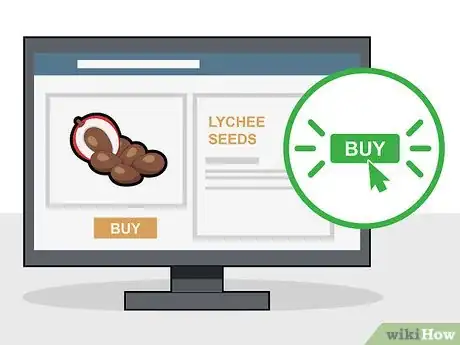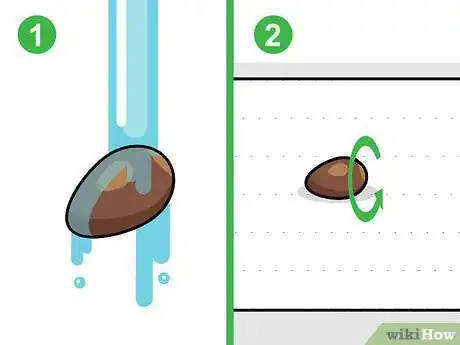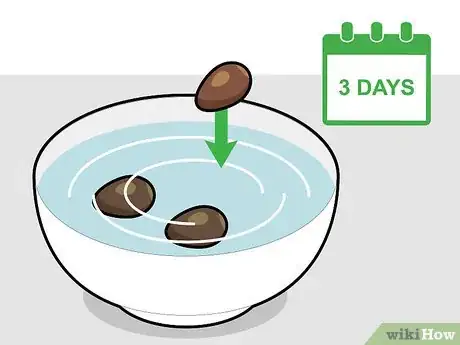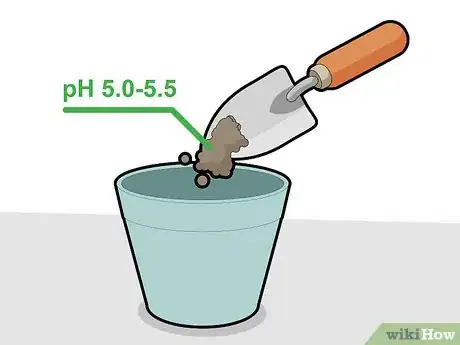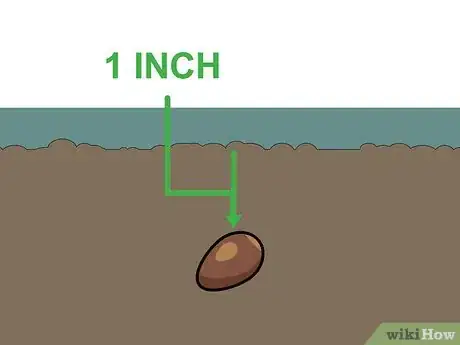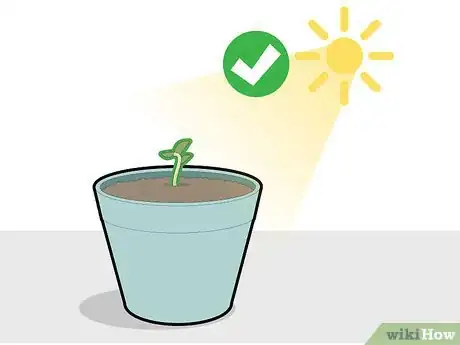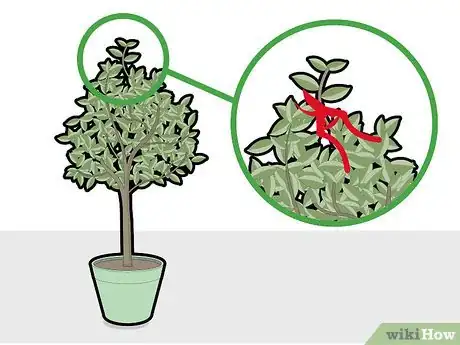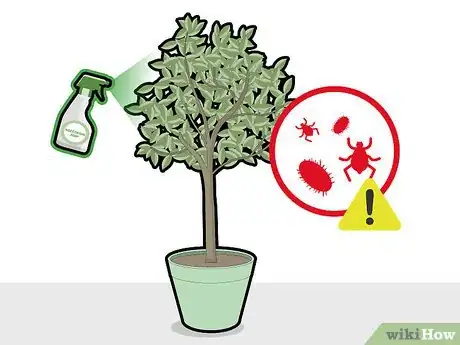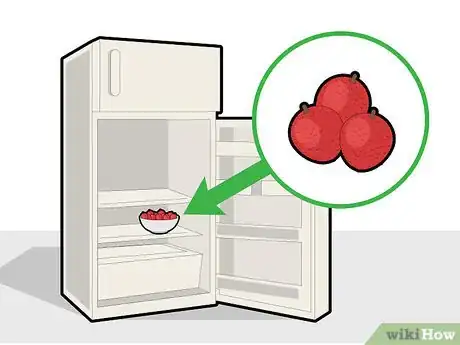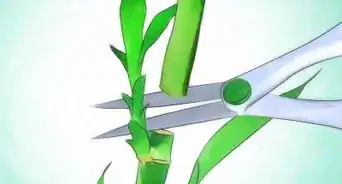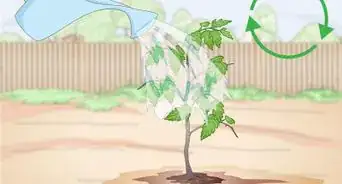This article was co-authored by Lauren Kurtz. Lauren Kurtz is a Naturalist and Horticultural Specialist. Lauren has worked for Aurora, Colorado managing the Water-Wise Garden at Aurora Municipal Center for the Water Conservation Department. She earned a BA in Environmental and Sustainability Studies from Western Michigan University in 2014.
There are 15 references cited in this article, which can be found at the bottom of the page.
wikiHow marks an article as reader-approved once it receives enough positive feedback. In this case, 93% of readers who voted found the article helpful, earning it our reader-approved status.
This article has been viewed 72,994 times.
The beautiful lychee tree originated in southern China and has been around for thousands of years. Thanks to its delicious fruit and lush, deep green foliage, the lychee has since become a staple in yards and homes in tropical and subtropical regions. Growing your own plant from a tiny seed is a long and delicate process, but before you know it your tree will be flourishing and ready to grow fruit!
Steps
Obtaining a Suitable Lychee Seed
-
1Buy lychee fruit from a grocery store or farmer’s market. Go ahead and choose a few of the lovely round fruits and save the brown seeds inside. Lychee fruit will be available during the typical lychee season, usually throughout May, June, and July in the Northern hemisphere.[1]
- Make sure the fruit you get is fresh and completely ripe. The skin will be dark red, almost purple, and the bumps will flatten due to the amount of juice and sugar inside.[2]
- Large seeds germinate better than smaller seeds. [3]
- Seeds are only good for a few days once they’ve been removed from the fruit, so plant them right away. Don’t buy lychee fruit until you’re ready.
-
2Purchase seeds online if you can’t find fresh fruit. There are plenty of online retailers that will ship you lychee seeds that are ready for planting. Just be aware that seeds taken from fresh fruit have a higher germination rate.Advertisement
-
3Clean the seed with water and paper towels. Enjoy the delicious snack first, then clean off all remnants of fruit and you’ll have a beautiful burgundy seed that’s ready to become a tree. Get the seed wet, and then roll it gently around in the paper towel. This will remove any lingering debris.
-
4Soak the seed in room-temperature water for 3 days. To increase the chance of germination, fill a cup or bowl with water and submerge the seed completely. After a few days, the brownish husk will begin to crack, which is a telltale sign that the seed is about to sprout.
- The water can be tap or bottled.
- Replace the water every day to maintain freshness.[4]
Planting the Lychee Seed
-
1Fill a small pot with slightly acidic soil. Find a container you won’t mind seeing every day and fill it with dirt that will promote healthy growth. Ideally, the soil will have a pH between 5.0 and 5.5.[5] This imitates the soil of the lychee tree's original tropical habitat.
- Any soil meant for azaleas or gardenias would be a good match.[6]
-
2Bury the seed near the surface. Push the lychee seed carefully into the soil. The perfect depth for a lychee seed is roughly 1 inch (2.5 cm), any deeper or shallower might lessen the odds of a tree actually growing.[7]
-
3Store your newly planted lychee seed in a shaded place. Keep your pot away from direct sunlight to keep the seed from overheating during the germination process. A kitchen table or nightstand would work well.
- The temperature of the room should be between 70 °F (21 °C) and 85 °F (29 °C).[8]
-
4Water your lychee seed every other day. While being sure not to overdo it, water your lychee sprout often and well. Standing water might drown the seed, but don’t let it dry out.[9]
-
5Move the plant to a sunny area when it sprouts. When little green leaves poke through the top layer of soil, it’s time to move the pot into the sunlight. Direct is best.[10] Your little lychee will enjoy the warmth and it will grow quickly.
- A newly sprouted seedling will be comfortable in a small container until it reaches 7 inches (18 cm) or 8 inches (20 cm) tall. When growth slows, usually after 1 year, it's time to upgrade to a larger pot.
Caring for Lychee Trees
-
1Repot every spring. Lychee trees can grow really fast in a single year, so be sure to upgrade to larger pots. Every spring, purchase a large container and carefully transfer the soil and tree. Do this until your tree gets as big as you want.
- Choose a pot with drainage holes.
- Cover the bottom of the new pot with soil.
- Water your lychee plant to loosen the roots, then pull and rock carefully to avoid breaking roots.
- Place your plant in the new pot and cover with dirt.
- Water immediately after replanting.
-
2Trim your lychee to keep it from getting too big. When left alone, lychee trees can get up to 10 feet (3.0 m) tall![11] Once your plant is the right size for your house or patio, remove excess foliage to keep it that way. Strip off leaves and cut wayward branches.
- To keep your tree from getting any taller, cut leaves and branches from the top. The tree will compensate by glowing lower and bushier.
- Try to produce a rounded shape, which is traditional for lychee trees.[12]
- You may not need to prune your tree for the first few years.
-
3Keep the lychee tree in full sun. While shade might not kill a lychee tree, it will completely stop it from growing.[13] Your plant will be content and productive near a window that receives a lot of light. 12 hours of full light is acceptable, even preferable!
-
4Water consistently throughout the year. Dry soil is harmful to lychee plans, so be sure to water every other day. Keep the soil damp, but not waterlogged. Drowning the roots will also hinder growth.
-
5Treat any pests that appear. Lychee trees can play host to aphids, mealybugs, mites, and other pests. Look for tiny webs, curling leaves, or a white powdery substance. If you see any sign of infestation, treat as soon as possible to prevent the insects from spreading from one area of the plant to another.
- Remove insets by hand and cut off affected leaves/branches. If the pests persist, you can use an insecticidal soap or essential oils. Only use commercial insecticides as a last resort.[14]
- Pests may not be an issue unless you keep your lychee plant outside in the spring and summer.
Harvesting and Storing Lychee Fruit
-
1Wait for fruit to turn dark red. It can take a lychee tree anywhere from 5-25 years to produce fruit, something which can be affected by climate, soil quality, and the amount of available sun.[15] Be patient and you’ll start seeing produce of your very own.
-
2Cut fruit close to the branch. Lychee grow in bunches, almost like grapes, and you can cut the entire collection. Trim as close as you can to the large branch the bunch hangs from.[18]
- Don’t worry about taking a few leaves with the fruit, the tree will recover.
-
3Store fruit in the refrigerator. Keeping lychee fruit cool is important to maintaining color and taste. Store it in the refrigerator to keep it fresh for a longer period of time.
- You can keep lychee fruit in the refrigerator for up to 5 weeks.
- Don’t eat any fruit that looks like it was eaten by bugs or fruit flies.
Community Q&A
-
QuestionWhat type of fertilizer should be used for lychee?
 Community AnswerUse a fertilizer that either does not have any nitrogen in it (or is very very low in nitrogen), but emphasizes potassium.
Community AnswerUse a fertilizer that either does not have any nitrogen in it (or is very very low in nitrogen), but emphasizes potassium.
Warnings
- Lychee trees do much better in warm, humid environments, so it may be difficult for your plant to grow fruit if you don’t live in an area with these conditions.⧼thumbs_response⧽
References
- ↑ http://www.lycheesonline.com/lycheeseason.cfm
- ↑ http://www.lycheesonline.com/stagesofdevelopment.cfm
- ↑ http://www.fao.org/3/ac681e/ac681e07.htm
- ↑ http://hortsci.ashspublications.org/content/50/4/628.full
- ↑ https://www.gardeningknowhow.com/ornamental/trees/lychee-tree/growing-lychee-trees.htm
- ↑ https://www.gardeningknowhow.com/garden-how-to/soil-fertilizers/acid-loving-plants.htm
- ↑ http://hortsci.ashspublications.org/content/50/4/628.full
- ↑ http://hortsci.ashspublications.org/content/50/4/628.full
- ↑ http://www.lycheesonline.com/plantingtips.cfm
- ↑ http://www.lycheesonline.com/plantingtips.cfm
- ↑ https://www.fast-growing-trees.com/Lychee-Tree.htm
- ↑ https://www.gardeningknowhow.com/ornamental/trees/lychee-tree/pruning-lychee-trees.htm
- ↑ http://www.lycheesonline.com/healthylycheetrees.cfm
- ↑ http://www.lycheesonline.com/healthylycheetrees.cfm
- ↑ https://plantinstructions.com/tropical-fruit/how-to-grow-lychees/
- ↑ https://www.daf.qld.gov.au/business-priorities/plants/fruit-and-vegetables/fruit-and-nuts/lychees,-longans-and-rambutans/faqs-about-lychees,-longans-and-rambutans/lychee-faqs-harvesting,-marketing-and-exporting
- ↑ https://www.daf.qld.gov.au/business-priorities/plants/fruit-and-vegetables/fruit-and-nuts/lychees,-longans-and-rambutans/faqs-about-lychees,-longans-and-rambutans/lychee-faqs-harvesting,-marketing-and-exporting
- ↑ https://www.daf.qld.gov.au/business-priorities/plants/fruit-and-vegetables/fruit-and-nuts/lychees,-longans-and-rambutans/faqs-about-lychees,-longans-and-rambutans/lychee-faqs-harvesting,-marketing-and-exporting
- ↑ https://www.ishs.org/ishs-article/863_55
About This Article
Growing a lychee tree from seed is a long and delicate process, but if you’re patient your seed will soon flourish and be ready to grow fruit. First, get a lychee fruit from the grocery store and save some of the brown seeds inside. Then, soak the seeds in water for 3 days or until the brownish husks begin to crack. At that point, they're ready to sprout. Plant the seeds in a small pot and store them in a shaded area. Water them every other day. Once your seeds sprout green leaves, move the pot into the sunlight. Lychee trees can grow fast, so upgrade to larger pots every spring. For more tips from our Horticulturist co-author, including how to harvest your lychee fruit, keep reading!

